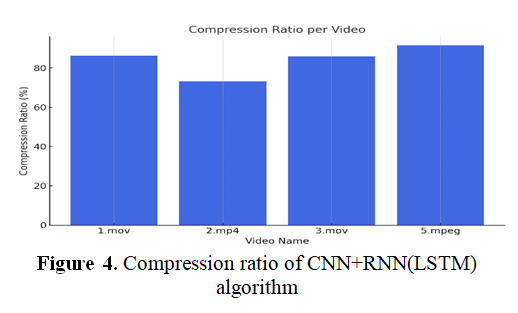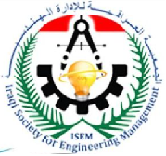Video compression by hybrid neural networks (CNN+RNN(LSTM)) algorithm and generative adversarial network (GAN) algorithm
DOI:
https://doi.org/10.71229/sqe4h444Keywords:
Video Compressive , Convolutional Neural Networks (CNN) , Recurrent Neural Networks (RNN), Long Short-Term Memory (LSTM) , compression ratio , Peak signal-to-noise ratio (PSNR)Abstract
As the need for high-quality video increases it has become necessary to develop smarter compression methods. Artificial neural networks (ANNs) have emerged as an effective tool in this field enabling them to extract the most important features from video and minimize temporal and spatial redundancy resulting in an efficient and high-quality compressed representation. Some of the most prominent models used are: Hybrid neural networks (CNN+RNN(LSTM)) Hybrid neural networks combine convolutional neural networks (CNNs), recurrent neural networks (RNNs), and especially long short-term memory (LSTM) units to extract spatial and temporal features from data, GAN, GANs compress video files while maintaining high perceptual quality. They encode each frame into a compressed latent representation, allowing for realistic reconstruction. This method is efficient, making it ideal for video transmission applications where perceptual accuracy is more important than perfect pixel accuracy. These techniques enable efficient compression without significant quality loss, representing a paradigm shift in modern video compression techniques. After analyzing the results the highest compression ratio (94.75) was achieved by compressing using the GAN algorithm. The highest PSNR (36.08) was achieved by CNN+RNN(LSTM) compression.
References
[1] Ma, S., Zhang, X., Jia, C., Zhao, Z., Wang, S., & Wang, S. (2019). Image and video compression with neural networks: A review. IEEE Transactions on Circuits and Systems for Video Technology, 30(6), 1683-1698.
[2] Darwich, M., & Bayoumi, M. (2024). Video quality adaptation using CNN and RNN models for cost-effective and scalable video streaming Services. Cluster Computing, 27(5), 6355-6375.
[3] Shukor, M., Damodaran, B. B., Yao, X., & Hellier, P. (2022, October). Video coding using learned latent gan compression. In Proceedings of the 30th ACM International Conference on Multimedia (pp. 2239-2248).
[4] Rippel, O., Nair, S., Lew, C., Branson, S., Anderson, A. G., & Bourdev, L. (2019). Learned video compression. In Proceedings of the IEEE/CVF International Conference on Computer Vision (pp. 3454-3463).
[5] Krishnamurthy, C., & Angadi, M. (2014). Trends in Digital File Formats for Long-Term Preservation: An Overview. Indian Journal of Library and Information Technology (IJLIT), 4(2), 23-29.
[6] Laghari, A. A., He, H., Khan, A., & Karim, S. (2018). Impact of video file format on quality of experience (QoE) of multimedia content. 3D Research, 9, 1-11.
[7] Lam, Y. H., Zare, A., Cricri, F., Lainema, J., & Hannuksela, M. M. (2020, October). Efficient adaptation of neural network filter for video compression. In Proceedings of the 28th ACM International Conference on Multimedia (pp. 358-366).
[8] Ding, D., Ma, Z., Chen, D., Chen, Q., Liu, Z., & Zhu, F. (2021). Advances in video compression system using deep neural network: A review and case studies. Proceedings of the IEEE, 109(9), 1494-1520.
[9] Bellantonio, M. (2016). Hybrid CNN+ LSTM for face recognition in videos (Master's thesis, Universitat Politècnica de Catalunya).
[10] Du, P., Liu, Y., Ling, N., Liu, L., Ren, Y., & Hsu, M. K. (2022). A generative adversarial network for video compression. Proceedings of SPIE, 129–136.
[11] Wang, J., Deng, X., Xu, M., Chen, C., & Song, Y. (2020, August). Multi-level wavelet-based generative adversarial network for perceptual quality enhancement of compressed video. In European conference on computer vision (pp. 405-421). Cham: Springer International Publishing.
[12] Deshpande, R. G., Ragha, L. L., & Sharma, S. K. (2018). Video quality assessment through PSNR estimation for different compression standards. Indonesian Journal of Electrical Engineering and Computer Science, 11(3), 918-924.

Downloads
Published
Issue
Section
License
Copyright (c) 2025 Al-Noor Journal of Engineering Management and Computer Science

This work is licensed under a Creative Commons Attribution-NonCommercial-ShareAlike 4.0 International License.









